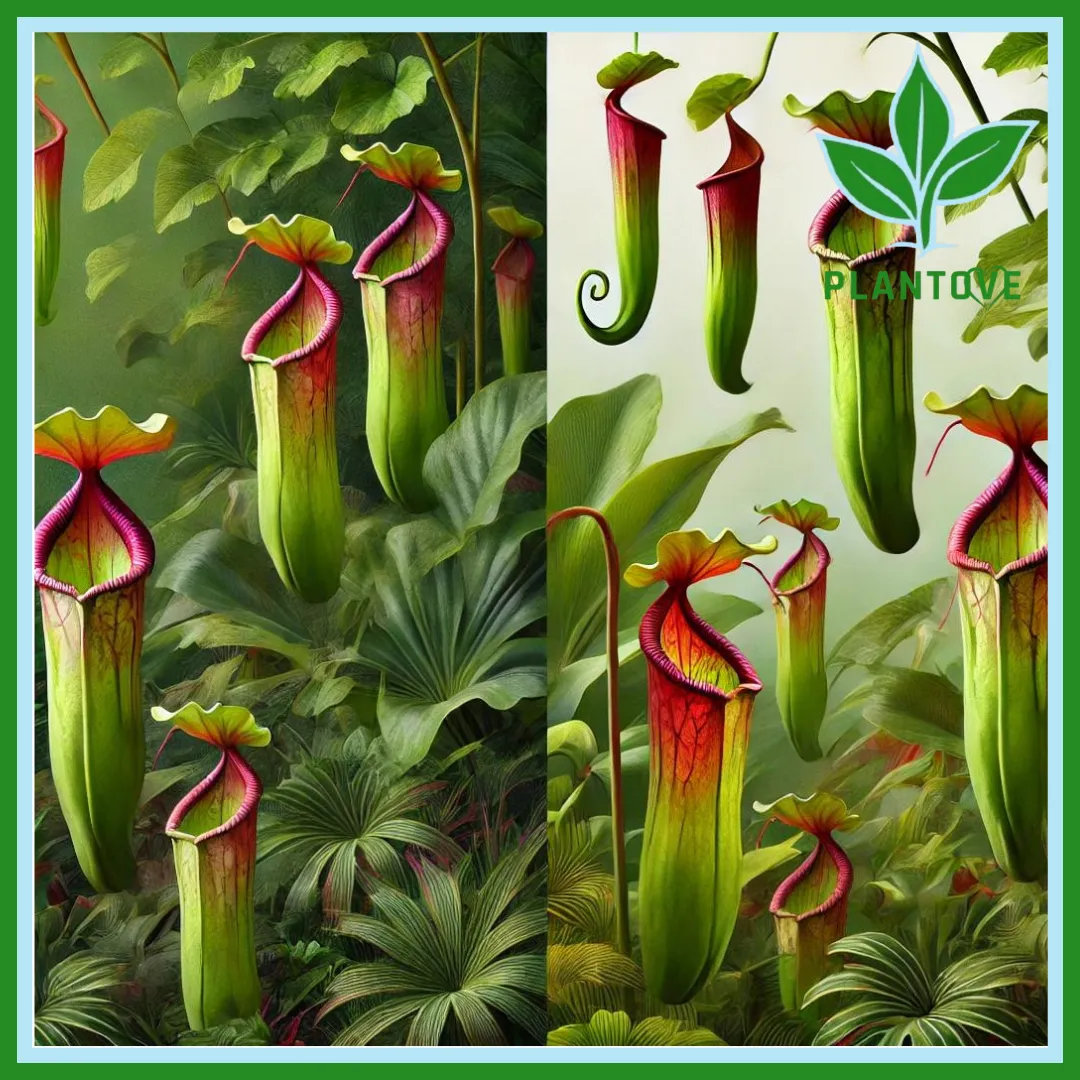The pitcher plant is a fascinating and exotic addition to any plant enthusiast’s collection. Known for its unique appearance and carnivorous feeding habits, the pitcher plant (genus Nepenthes) is a striking specimen that can captivate the attention of both novice and experienced gardeners. In this comprehensive guide, we’ll explore everything you need to know about the pitcher plant, from its fascinating characteristics to detailed care instructions, whether you’re growing it indoors or outdoors.
What is a Pitcher Plant?
The pitcher plant is a type of carnivorous plant that belongs to the Nepenthaceae family. It gets its name from the distinctive pitcher-shaped leaves, which resemble tall, tubular pitchers. These plants are renowned for their unique method of trapping and digesting insects to obtain essential nutrients.
Pitcher plants come in several varieties, but all share common features: tubular, modified leaves that form a deep cavity filled with digestive enzymes and fluids. The plant lures insects with its colorful, nectar-rich surface and slippery interior, which causes prey to fall into the liquid at the bottom where they are digested.
Some popular species of pitcher plants include:
- Nepenthes alata – Known for its bright red and green, trumpet-shaped pitchers.
- Nepenthes ventricosa – Features smaller, often striped pitchers with a distinct reddish hue.
- Nepenthes rajah – Recognizable by its large, bowl-shaped pitchers that can hold several inches of liquid.
- Nepenthes mirabilis – Characterized by its varied pitcher shapes and colors, often seen in tropical regions.
Growing Pitcher Plants Indoors
Growing pitcher plants indoors can be a rewarding experience, allowing you to observe their intriguing feeding behaviors up close. However, these exotic plants have specific care requirements to thrive in a home environment.
Light Requirements
Pitcher plants need plenty of light to grow and maintain their vibrant colors. They generally prefer bright, indirect sunlight, but some species can tolerate direct sun. Place your pitcher plant near a south- or east-facing window where it can receive at least 6 hours of bright light each day. If natural light is insufficient, consider using fluorescent or grow lights to supplement.
Soil and Potting
Pitcher plants require a well-draining, acidic soil mix to mimic their natural habitat. A mix of sphagnum moss, perlite, and sand works well. Avoid using regular potting soil, as it can be too rich and may harm the plant. Choose a pot with drainage holes to prevent water from accumulating at the bottom, which can lead to root rot.
Watering and Humidity
Pitcher plants thrive in high humidity and require consistent moisture. Use distilled water or rainwater, as tap water may contain minerals that can harm the plant. Keep the soil moist but not waterlogged. To maintain high humidity levels, you can place your pitcher plant in a humidity tray or use a humidifier.
Feeding and Fertilization
Pitcher plants are carnivorous and primarily obtain nutrients from insects. If grown indoors, you may need to supplement their diet by feeding them live or dried insects every few weeks. Use a balanced, diluted fertilizer designed for carnivorous plants during the growing season to provide additional nutrients.
Growing Pitcher Plants Outdoors
For those living in warmer climates, pitcher plants can be successfully grown outdoors. They are well-suited to boggy or swampy conditions and can add a unique touch to garden spaces.
Choosing the Right Location
Select a planting site that receives plenty of sunlight. Pitcher plants thrive in full sun to partial shade. Ensure the soil is consistently moist and well-draining. An area with a slightly acidic pH is ideal.
Soil and Planting
Outdoor pitcher plants benefit from a soil mix similar to that used indoors: sphagnum moss, perlite, and sand. If planting in the ground, amend the soil to improve drainage and acidity. Space the plants about 12-18 inches apart to allow for their growth and spread.
Watering and Care
Keep the soil consistently moist, especially during hot weather. Mulching around the plants can help retain moisture and regulate soil temperature. In colder climates, pitcher plants may need protection from frost or be brought indoors during the winter months.
Common Issues and Solutions for Pitcher Plants
Despite their hardy nature, pitcher plants can encounter a few problems. Here’s how to address common issues:
- Brown or Dried Pitchers: This can be a sign of insufficient humidity or water stress. Ensure the plant receives enough moisture and maintain high humidity levels.
- Yellowing Leaves: Overwatering or using tap water with high mineral content can cause yellowing. Use distilled or rainwater and avoid overwatering.
- Pest Infestations: Indoor pitcher plants can sometimes attract pests like aphids or spider mites. Inspect your plant regularly and treat infestations with insecticidal soap or neem oil.
- Poor Pitcher Formation: Inadequate light or nutrient deficiencies can lead to poor pitcher development. Ensure the plant gets enough light and feed it appropriately.
Using Pitcher Plants in Landscaping
Pitcher plants can be an eye-catching addition to garden landscapes, especially in bog gardens or alongside water features. Their unique appearance makes them a conversation piece and adds a touch of the exotic to any garden.
- In Bog Gardens: Pitcher plants thrive in boggy, moist conditions, making them ideal for bog gardens or wetland-themed landscapes.
- As Container Plants: Grow pitcher plants in large containers to display their beauty on patios, decks, or garden spaces.
- In Carnivorous Plant Collections: Combine pitcher plants with other carnivorous plants like Venus flytraps and sundews to create a diverse and intriguing plant display.
Conclusion: Embrace the Beauty of the Pitcher Plant
The pitcher plant is a remarkable and visually striking addition to any plant collection, whether grown indoors or outdoors. With its unique carnivorous nature and vibrant, exotic appearance, it’s no wonder that the pitcher plant has captured the fascination of gardeners and plant enthusiasts alike.
By following the care tips outlined in this guide – from providing the right light and soil conditions to addressing common problems – you’ll be well-equipped to cultivate healthy, thriving pitcher plants. So why not bring a touch of the wild into your space? Add a pitcher plant to your collection today and enjoy the beauty and intrigue of this remarkable carnivorous plant!

